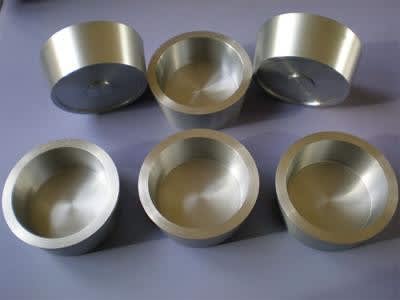Zirconium Silicate Media is a one of its kind product that provides its users with top quality as well as the superior level of grinding with higher wear resistance, better cost-effectiveness, and a reduced overall contamination rate. Zirconium Silicate beads are formulated within strict quality control laboratory containers wherein they undergoing specialized dripping technique followed by high-temperature sintering and an eventual surface conditioning. This super hard media is the ideal solution for milling specialized and complex products in comparison to other alternative grinding media options such as glass beads or Alumina.
The basic characteristics of a good quality Zirconia grinding media are that they are high in density, shiny and smooth in appearance and consist of a uniform solid spherical shape which in turn assures of better efficiencies, decreased media wear and a much longer life span respectively. Additional specialized techniques such as solidifying the media from surface to center results in further strengthening of the molecular structure of ZrSi beads.

Zirconium silicate media balls exist in varying sizes and diameters in accordance with each buyer’s prerequisites. ZrSi04 applications and uses are tremendous and widespread from everyday products such as paints and inks to ceramics, pharmaceuticals and even in controlled quantities within edible food materials.
Zirconium Silicate grinding media plays an integral role as an emulsion agent in order to achieve a ceramic glaze in refractory’s and on cutlery etc. Also being chemically inert and nonreactive allows ZiSi04 media to be used for grinding plastic on a mass level and at economical costs. Moreover, zirconium casting refractories metals of all kinds utilize this media for operational purposes within glass melting furnaces, cement production and heat/fire resistant porcelain among many others.
On a generalized level, Zirconium Silicate grinding media performs numerous operations including mold cleaning of stainless steel, plastic as well as non-ferrous materials, mechanical polishing, buffing, and eventual after-cleaning processing.
On an overall rating scale, the benefits of this industrial product being extremely dense and strong results in creating an ideal surface roughness and metallic depth with a much lower breakage or contamination rate comparatively. These attributes, in turn, renders Zirconium Silicate milling balls suitable for application on all types of materials and within both wet and dry environments easily.
For more information about platinum, please visit http://www.samaterials.com/
The basic characteristics of a good quality Zirconia grinding media are that they are high in density, shiny and smooth in appearance and consist of a uniform solid spherical shape which in turn assures of better efficiencies, decreased media wear and a much longer life span respectively. Additional specialized techniques such as solidifying the media from surface to center results in further strengthening of the molecular structure of ZrSi beads.

Zirconium silicate media balls exist in varying sizes and diameters in accordance with each buyer’s prerequisites. ZrSi04 applications and uses are tremendous and widespread from everyday products such as paints and inks to ceramics, pharmaceuticals and even in controlled quantities within edible food materials.
Zirconium Silicate grinding media plays an integral role as an emulsion agent in order to achieve a ceramic glaze in refractory’s and on cutlery etc. Also being chemically inert and nonreactive allows ZiSi04 media to be used for grinding plastic on a mass level and at economical costs. Moreover, zirconium casting refractories metals of all kinds utilize this media for operational purposes within glass melting furnaces, cement production and heat/fire resistant porcelain among many others.
On a generalized level, Zirconium Silicate grinding media performs numerous operations including mold cleaning of stainless steel, plastic as well as non-ferrous materials, mechanical polishing, buffing, and eventual after-cleaning processing.
On an overall rating scale, the benefits of this industrial product being extremely dense and strong results in creating an ideal surface roughness and metallic depth with a much lower breakage or contamination rate comparatively. These attributes, in turn, renders Zirconium Silicate milling balls suitable for application on all types of materials and within both wet and dry environments easily.
For more information about platinum, please visit http://www.samaterials.com/










